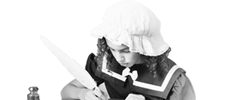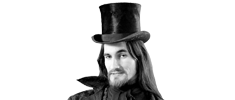‘Prisoners of Conscience and Prison Visitors: The Quakers of Lancaster Castle’ by Jenny Paull BA
The Quaker association with the Castle dates from the earliest days of the movement. George Fox, the founder of the Religious Society of Friends (the Quakers), began his ministry in the North-West of England in 1652. By October of that year he had caused sufficient furore among the religious and political leaders of the area that he was brought before the Court at Lancaster Castle for preaching and holding meetings.
His mission had begun after he had climbed Pendle Hill and had a vision there of “a people to be gather’d”. This had led him to preach throughout Westmorland, Cumberland and, finally, into Lancashire by June, 1652 and he had gained or ‘convinced’ many followers on his way. In late June, he arrived at Swarthmoor Hall, near Ulverston, the home of Judge Fell. The Judge was away at the time but he had a reputation for welcoming travelling preachers and Fox was not only heard by the family but convinced Margaret Fell and her daughters.
Swarthmoor Hall became Fox’s base and is still the spiritual home of the movement today. he founding of the Quakers coincided with a time of great political and religious upheaval in the aftermath of the Civil War. Many new religious sects were formed but the Quakers grew and gained popularity very quickly causing alarm among the authorities.
From the beginning, the Quakers were persecuted for holding and attending meetings or interrupting the priests as they preached in church. Later, laws were passed against refusing to pay tythes to the Church of England and, after the restoration of the monarchy, refusing to swear an oath of loyalty to the Crown. It was against Quaker beliefs to pay tythes to the Church and the refusal of the oath is based on two passages from the New Testament, which forbids swearing oaths.
There were many Quakers imprisoned and tried at the castle. At one stage in the late 1660s, there were hundreds imprisoned in the castle, usually for non-payment of tythes. Many suffered terrible punishments for their faith including severe beatings such as that of Henry Wood who was beaten so badly that, “blood came out of his eyes”.
Women were especially vulnerable to sexual assault as well as beatings. The scold’s bridle, such as the one on display in the castle, was used on a number of Quaker women to stop them preaching. It was a particularly humiliating form of torture and the only known written account of wearing it is by a Quaker woman called Dorothy Waugh. She was put in the bridle in Carlisle in 1654 and she wrote:
Like a steel cap and my hat being violently plucked off which was Pinned to my head, whereby they tare my clothes to put on their Bridle as they call it, which was a stone weight of iron… and three Bars of iron to put over my face, and a piece of it was put in my Mouth which was so unreasonable big for that place as cannot be Well related, which was locked on my head, and so I stood their Time with my hands bound behind me with the stone weight of Iron upon my head, and the bitt in the mouth to keep me from Speaking; and the mayor said he would make me an example To all that should ever come in that name.
The most famous trials were those in 1664 of George Fox and Margaret Fell.
At her trial, Margaret Fell challenged Colonel Kirkby, the former High Sheriff, to stop whispering to the Judge and come down and speak directly to her if he had anything to say.
At his trial, George Fox got into an argument with the Judge because he refused to remove his hat. ‘Hat honour’, or the removing of men’s hats in the presence of a social superior, was expected in the 17th Century but the Quakers believed in equality before God and didn’t observe the practice.
At both trials the defendants complained about the state of the prison and invited the Judge and officials to come and see the gaol for themselves. Fox actually got Kirkby and some of the Justices to go up to the place where he was imprisoned. He wrote, “and when they came up they were durst scarcely go in it, it was so bad – rainy and windy, and the badness of the floor – and others that came up said it was a jakes house.”
This was the prison referred to by Fox as his ‘Dark House’. The bad prison conditions were responsible for ill-health and even death among many Quaker prisoners. Twelve are known to have died here for their faith. This was due to disease, injuries from violent arrest or existing illnesses exacerbated by the prison conditions. Among them was Elizabeth Wildman who died in 1676: the only known woman to die here for her faith. The last of these prisoners to die here was John Haydock in 1720. In the early 18th Century there were still a number of Quakers held for non-payment of tythes.
Among the Quaker prisoners held in the Castle was the poet, Mary Southworth, later Molyneax. She was arrested in 1684 after leaving a Quaker meeting and brought to the castle prison. Whilst in prison, she wrote many of her poems including, ‘Meditations Concerning Our Imprisonment, Only For Conscience Sake’ 1684, in Lancaster Castle. This poem must have been a great inspiration to the other Quaker prisoners in the castle at the time. She met her future husband while in gaol and he served further terms in the Castle after they were married. She died in 1695 and Henry, her husband, had her poems published; something she would not do because it was against her beliefs.
During the 18th and early 19th Centuries, many local Quakers were involved in commerce and the professions. One, William Butterfield, was a Constable of the Castle. Another, Lawson Whalley, was a popular local doctor and surgeon to the Castle. He was a descendant of John Lawson, the first Quaker to be imprisoned in the Castle in 1654.
In 1820 the prison was visited by Elizabeth Fry, the Quaker prison reformer, as the new female penitentiary was being built. She hoped this new building would be as “equally well-employed and regulated” as the male prison she had previously seen and complimented it on its, “cleanliness, good order and industry”.
Elizabeth Fry first visited the ships for women transportees on the Thames in 1810s. This continued her association with the castle, if indirectly, through the work of British Ladies Committee she had founded. The committee visited female transport ships in the ports of the Thames and gave all women transportees items for personal use on the voyage and materials to make quilts to use, although many were sold on reaching port. One of these quilts still exists in the National Gallery of Australia.
The tradition of an interest in prison welfare continued in the Second World War when there were Conscientious Objectors in the Castle prison. From recent evidence, we have found that local Quakers gave assistance and hospitality to their families when they came to visit their relatives.
Each year, the castle still has hundreds of Quaker visitors who come to see it because of its importance in their history. Many still express great interest in life for modern-day prisoners and are interested to find that the large room in the Keep where so many early Quakers were recorded as having lived in appalling conditions became a home for debtors and is now an association room for current inmates.








